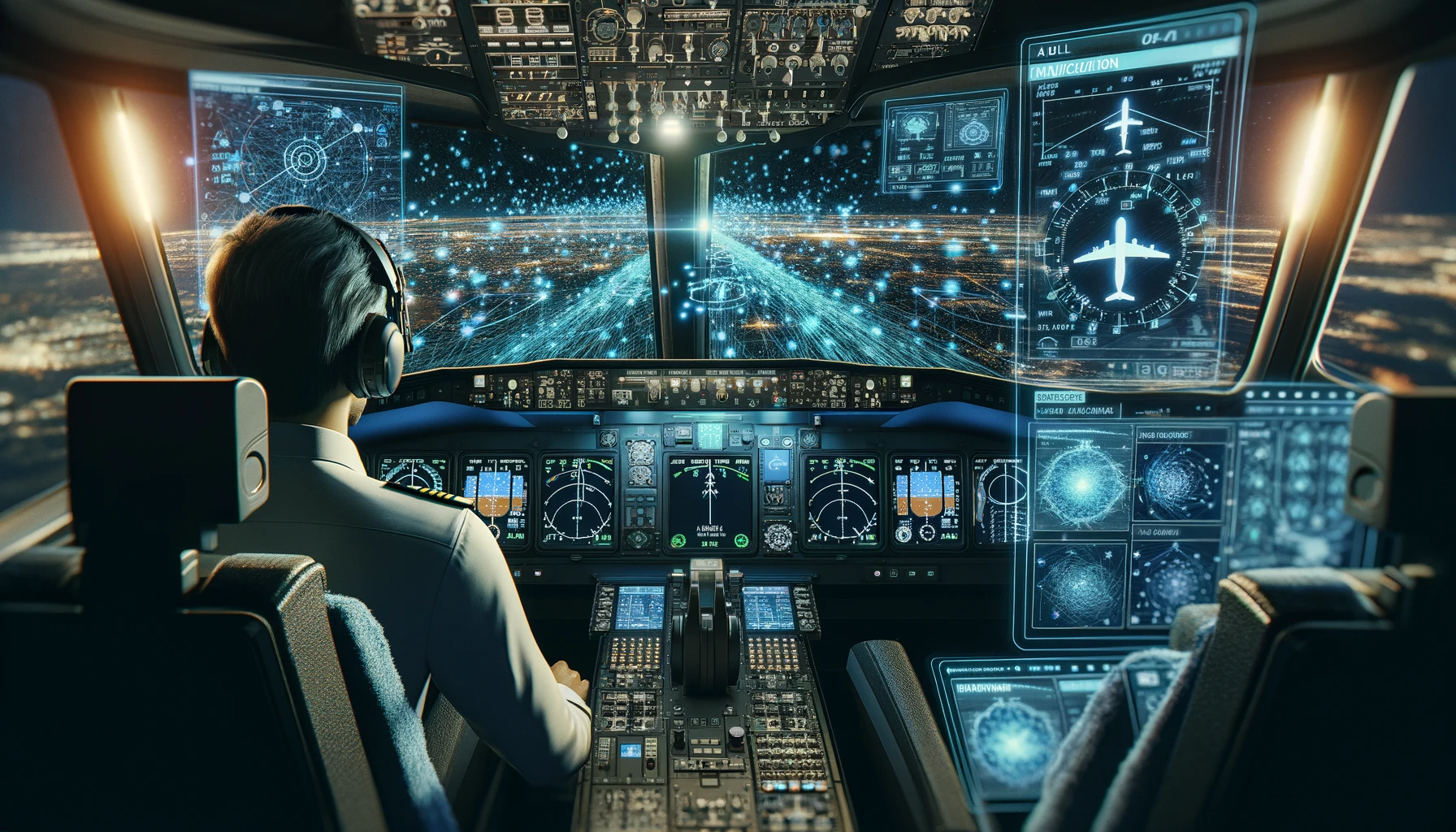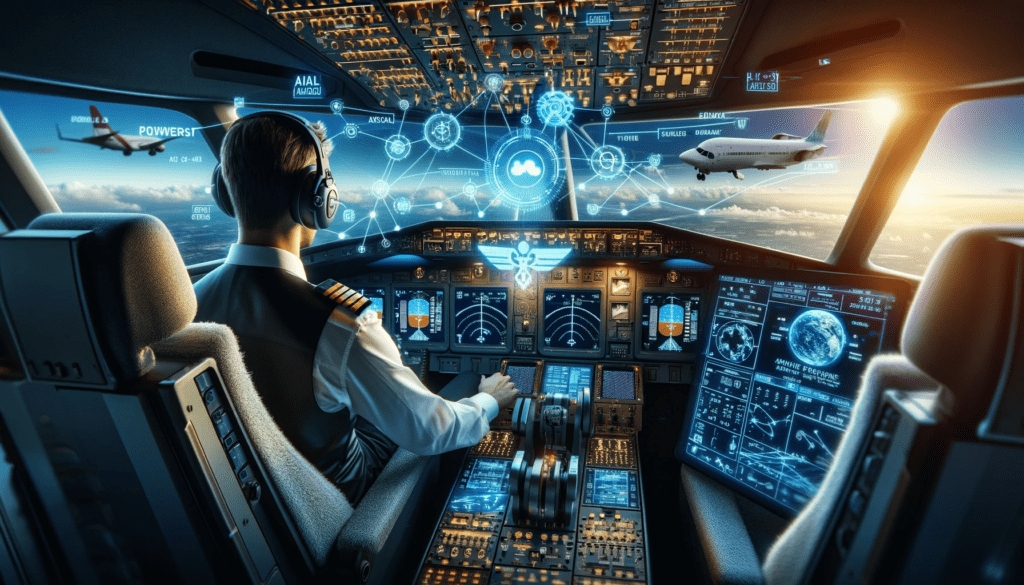How Can AI Improve Air Traffic Control and Aviation Safety?
In the rapidly expanding domain of global aviation, air traffic control (ATC) and aviation safety stand as critical pillars, ensuring the smooth operation of thousands of flights crisscrossing the skies at any given moment. The paramount importance of these components is underscored by the ever-increasing volume of air traffc, which demands meticulous coordination and unwavering attention to safety protocols. Efficient air traffic management is essential not only to prevent mid-air collisions and accidents but also to minimize delays, optimize flight routes, and reduce environmental impact through efficient fuel consumption.
However, the existing air traffic management systems and flight safety protocols, while robust, face a multitude of challenges in the face of burgeoning global air traffic. These challenges include managing the increasing air traffic density, ensuring precision in navigation to prevent airspace conflicts, and maintaining optimal operational efficiency under pressure. Additionally, the human-intensive nature of ATC poses limitations in terms of continuous concentration and susceptibility to fatigue, which can have implications for flight safety.
In this context, this article explores the transformative potential of Artificial Intelligence (AI) in revolutionizing air traffic management and aviation safety. AI, with its advanced computational capabilities, offers innovative solutions to enhance the efficiency, accuracy, and reliability of aviation operations. From optimizing air traffic routes using predictive analytics to enhancing flight safety through real-time decision-making support, AI stands poised to redefine the skies. This exploration aims to delve into how AI integration in aviation can lead to a safer, more efficient, and sustainable future in air travel, addressing the existing challenges while opening new horizons in aviation technology.

Overview of Air Traffic Control and Aviation Safety
Air Traffic Control (ATC) systems worldwide operate as the backbone of global aviation, ensuring safe and efficient management of air traffic in the skies. These systems encompass a range of practices, from ground-based control towers managing takeoffs and landings to area control centers overseeing en-route traffic. ATC relies heavily on radar systems, communication protocols, and the expertise of air traffic controllers to monitor, direct, and manage aircraft movements.
Aviation safety protocols are equally critical. These include stringent regulations for aircraft maintenance, standardized operational procedures, pilot training programs, and rigorous safety checks. Safety measures are continually updated to respond to new challenges and technological advancements, aiming to mitigate risks and prevent accidents.
However, traditional ATC and aviation safety systems face several challenges. With the escalating volume of air traffic, controllers must manage increasingly congested airspaces, leading to greater complexity and higher stress levels. Radar systems, while effective, have limitations in terms of coverage and detecting objects in real-time. Human factors, such as communication errors and fatigue, can also pose significant risks. Furthermore, the reliance on legacy systems can impede the integration of newer, more efficient technologies.
Introduction to AI in Aviation
Artificial Intelligence (AI) in aviation represents a paradigm shift, introducing advanced technologies like machine learning and predictive analytics to revolutionize aviation operations. Machine learning algorithms can analyze vast amounts of data to identify patterns and make informed predictions, enhancing decision-making processes. Predictive analytics enables the anticipation of potential issues, from maintenance needs to flight delays, allowing for proactive management.
AI is being integrated into various aspects of aviation to address the limitations of traditional systems. In ATC, AI can assist with real-time data processing and decision-making, reducing the workload on human controllers. In aviation safety, AI tools are being used for predictive maintenance, monitoring aircraft health, and enhancing flight safety protocols.
The potential benefits of AI in transforming aviation operations are immense. AI can lead to increased airspace efficiency, improved flight scheduling and route optimization, and enhanced safety measures. By reducing reliance on human intervention, AI also minimizes the risks associated with human error, paving the way for more autonomous and safer aviation systems.
AI in Air Traffic Management
AI’s role in air traffic management (ATM) is a game-changer, offering solutions to enhance the efficiency and safety of airspace management. One of the key areas where AI excels is in airspace efficiency. AI algorithms can optimize air traffic flows, predict traffic hotspots, and suggest alternative routes to reduce congestion and delays. This results in smoother operations and minimizes the environmental impact due to more efficient flight paths.
In flight scheduling, AI can analyze various factors such as weather conditions, airspace restrictions, and airport capacity to optimize takeoff and landing slots. This not only improves punctuality but also enhances the overall efficiency of airport operations. AI-driven systems can dynamically adjust schedules in real-time, responding promptly to any changes or disruptions.
Route optimization is another critical area where AI contributes significantly. By analyzing historical flight data, weather patterns, and current airspace conditions, AI can propose the most efficient routes, reducing fuel consumption and flight times. This not only leads to cost savings for airlines but also contributes to reducing the carbon footprint of aviation.
Examples of AI applications in current ATC systems include the use of AI-powered tools for collision avoidance and traffic prediction. For instance, some ATC systems now use AI to provide advanced conflict detection solutions, enhancing situational awareness and preventing potential mid-air collisions. Another example is the implementation of AI in managing airport ground operations, where it optimizes the movement of aircraft on runways and taxiways, reducing delays and improving throughput.
These advancements showcase AI’s transformative impact on air traffic management, highlighting its potential in creating a more efficient, safe, and sustainable aviation sector.
AI in Enhancing Flight Safety
Artificial Intelligence (AI) is increasingly recognized as a pivotal tool in enhancing flight safety, addressing various aspects from predictive maintenance to real-time decision-making and emergency responses. Predictive maintenance, one of AI’s key applications in aviation, involves analyzing data from aircraft sensors and systems to predict potential failures before they occur. This proactive approach significantly reduces the risk of in-flight issues, ensures timely maintenance, and increases aircraft reliability.
In terms of real-time decision-making, AI systems can assist pilots and air traffic controllers in making informed decisions under pressure. AI algorithms can quickly process vast amounts of data, from weather conditions to aircraft performance metrics, providing crucial insights that enhance situational awareness and support decision-making processes. This capability is vital in managing complex scenarios and avoiding potential hazards.
AI also plays a crucial role in emergency response. In critical situations, AI systems can analyze scenarios faster than human operators, suggesting optimal courses of action. For example, in the event of technical failures, AI can quickly calculate the best possible routes for emergency landings, considering factors such as weather, terrain, and aircraft performance.
Case studies demonstrate AI’s impact on aviation safety. For instance, some airlines have implemented AI-driven systems that monitor aircraft health in real-time, leading to a significant reduction in unscheduled maintenance and enhanced safety. Another example includes AI applications in flight simulators, providing pilots with realistic training scenarios and improving their response to emergency situations.
Challenges and Future Directions in AI-Driven Aviation
Implementing AI in aviation is not without challenges. Technical complexities, such as integrating AI with existing aviation systems and ensuring the accuracy and reliability of AI algorithms, are major considerations. Data security is another critical issue, given the sensitivity of aviation data and the potential consequences of breaches. Additionally, regulatory hurdles need to be addressed, as aviation is one of the most heavily regulated industries globally.
Looking to the future, advancements in AI-driven aviation systems are expected to be substantial. These may include more sophisticated AI algorithms for predictive maintenance, enhanced AI-assisted decision-making tools for pilots and controllers, and even the development of AI-driven autonomous aircraft.
The implications of AI on workforce dynamics in the aviation industry are also significant. While AI can augment human capabilities, there is a need to balance automation with human expertise, ensuring that AI acts as a support rather than a replacement.

Impact on Overall Aviation Operations Efficiency
The integration of AI into aviation operations significantly improves overall efficiency. AI applications lead to cost savings for airlines and airports through optimized fuel consumption, efficient flight scheduling, and reduced maintenance costs. By minimizing delays and enhancing operational efficiency, AI also contributes to an improved passenger experience, with on-time flights and smoother operations.
Environmental benefits are another important aspect. AI-enabled optimized flight paths and fuel consumption not only reduce operational costs but also minimize the environmental impact of aviation. These efficiencies contribute to the aviation industry’s efforts to reduce its carbon footprint and align with global environmental sustainability goals.
Conclusion
In conclusion, the integration of AI in air traffic control and aviation safety represents a significant stride towards revolutionizing aviation operations. AI’s potential to enhance flight safety, improve air traffic management, and increase overall operational efficiency is undeniable. By addressing current challenges and maximizing the benefits of AI applications, the aviation industry can achieve new levels of safety and efficiency.
The future trajectory of AI in aviation is poised to have far-reaching implications, not only in technical and operational domains but also in environmental sustainability and workforce dynamics. As AI continues to evolve, it will undoubtedly shape the future of aviation, driving the industry towards safer, more efficient, and more sustainable operations.
